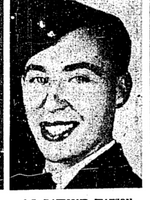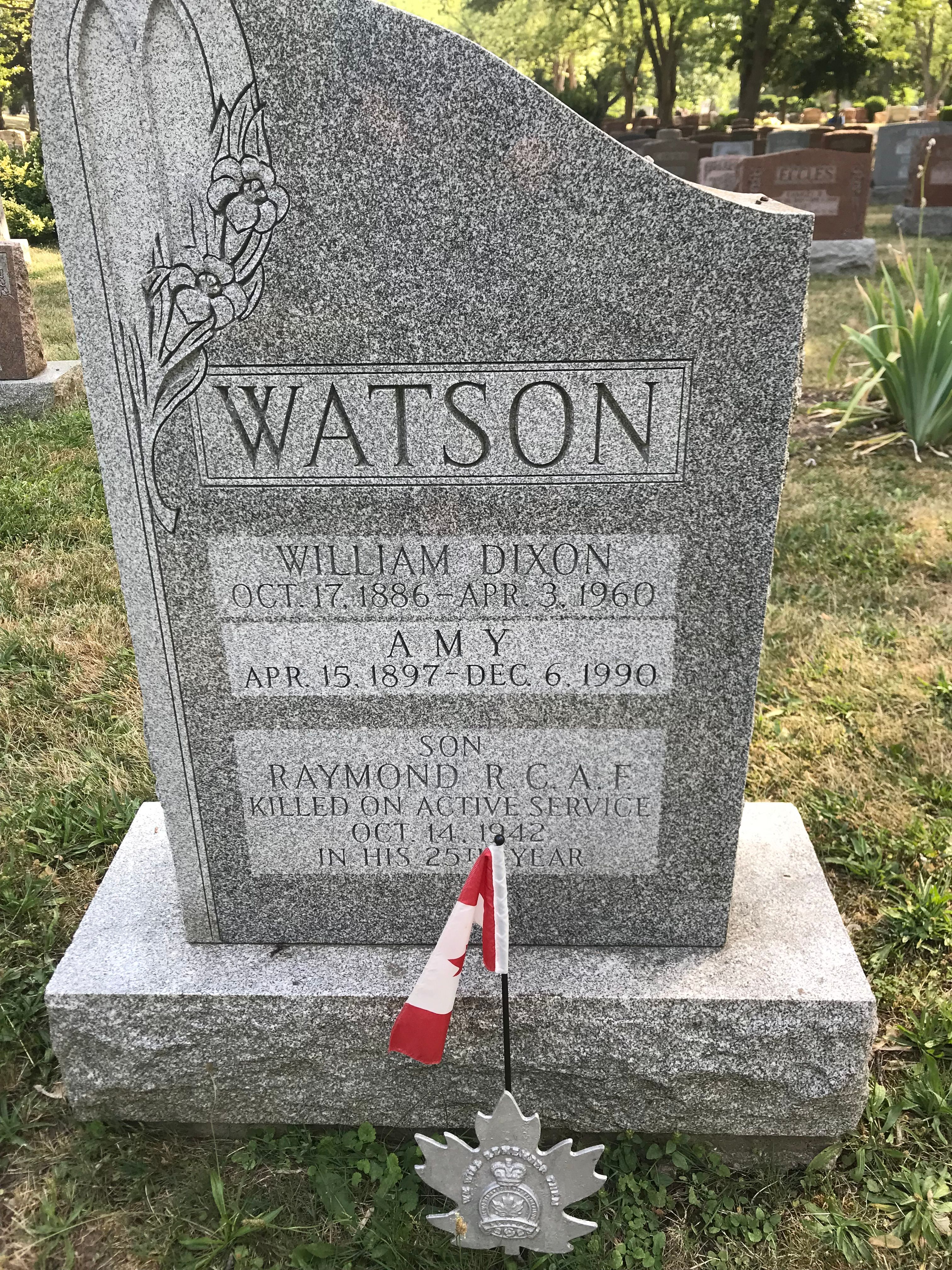


January 27, 1918 - October 14, 1942



Raymond Watson was born in Barrow, England, son of William Dixon Watson (1886-1960), 2nd class stationary engineer, and Amy (nee Will) Watson (1897-1990) of St. Catharines, Ontario. He had one younger brother, Lewis Ponsonby Watson and a half sister, Mrs. Jane Dunkley. The family was Anglican. The Watsons immigrated to Canada in 1919.
His schooling began at St. Kitts, 1924-1933, then in St. Catharines, Ontario until 1935. He attended night school in 1940-1941.
An apprentice welder at Algoma Steel Co., he lived in Sault Ste. Marie, Ontario when he enlisted at Galt, Ontario with the RCAF in October 1941 for ground duties.
Prior, he was a machine operator in St. Catharines for Stalkes Grouts, Buent Canada Cloth Co., and McFarlane Lightning Fastener Co.
His prior military experience was for one month at the beginning of 1941 at North Bay, Ontario at No. 22 BTC.
He took the WETP course at Galt Aircraft School from February to May 1942 and became an air frame mechanic.
Raymond enjoyed all sports “extensively” and his hobby was airframe welding. He stood 5’7” tall and weighed 139 pounds. He had blue eyes and brown hair with a fair complexion. He fractured his right elbow when he was 12 and did not have any of the typical childhood diseases.
He was sent to No. 1 Manning Depot, Toronto, Ontario May 22, 1942 until July 17. From there he was sent to TTS, St. Thomas, Ontario until he was posted to Torbay, Newfoundland in October 1942. He noted that he wanted to stay in the RCAF after the war and would like to be a disciplinarian with them.
In mid-August 1942, he was AWL from 0200 hours absent for three hours. His punishment was confined to barracks for seven days at TTS, St. Thomas, Ontario.
Raymond had $25 in War Savings Certificates as well as $225 in life insurance with Prudential Co., his mother sole beneficiary.
The night of October 14, 1942 was very dark with no moon. Sixty kilometres off the coast of Newfoundland, German U-boat U-106 torpedoed the SS Caribou on her starboard side. On board were 73 civilians including eleven children, 118 military personnel, and a crew of 46. The passengers were thrown from their bunks, several lifeboats and rafts were destroyed or could not be launched, as the ship sunk quickly, reports stating three minutes. Many passengers were forced to jump overboard. Over 135 people perished. Fifteen of the crew survived, many of them local men from the Channel/Port aux Basque area.
Two of the survivors who had suffered from shock and exposure due to the sinking of the SS Caribou, Aircraftmen Frank Earl Burton, 19, and Frederick Anthon Langley, 23, both airframe mechanics posted to Botwood, Newfoundland, perished in the fire at the Knights of Columbus hostel in St. John’s, Newfoundland, December 12, 1942. Ninety-nine people were killed, with 80 of them military personnel. Critically wounded: 109.
A letter dated October 16, 1942 was sent to Mr. and Mrs. Watson informing them that Raymond was missing on active service. F/O Gunn requested that they were to withhold this information until an announcement had been made through the press.
In January 1948, a memorial was erected at Port-aux-Basques, Newfoundland, in memory of those who died in the torpedoing of the S. S. Caribou.
In late October 1955, Mrs. Watson, now a widow, received a letter informing her that Raymond’s name would appear on the Ottawa Memorial as he had no known grave. Raymond’s name is etched on his parents’ headstone in Victoria Lawn Cemetery, St. Catharines, Ontario.
For additional information, please click on the links below.
LINKS: